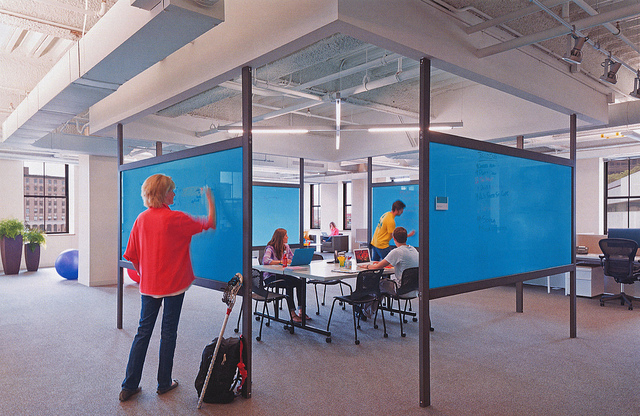Visual Management Systems
What role do visual management systems play in achieving lean goals? Their primary purpose is to make it very clear whether everything is performing as planned. Lean uses the principles of standard work to deliver consistent quality and velocity from a process. Visual control systems are put in place to easily identify any out of standard conditions so that they can be rectified as quickly as possible. By reacting to these abnormal conditions quickly, and then preventing them happening again, it becomes possible to run a very smooth, efficient lean process and be cost effective.
Andon
One of the most well known visual management systems is Andon. This is a visual system where workers have a fast, simple method for notifying management that there is a problem in the flow of production. This can take the form of a button or cord pull. Once the assembly line worker triggers the andon, an audible alert sounds to notify the relevant parties that there is a problem such as defects or part shortages. The andon is also often linked to an electronic signboard. The illuminated sign displays production status and makes it easy to see at a glance whether everything is running as planned.
This is a system that can be adapted for other fields. For example, in the service industry, some open-plan call centres staff are supplied with “panic cards”. During a difficult customer interaction, the staff member can raise their “panic card” and a manager or expert can come to assist. It’s a useful, visual way of ensuring that resources are deployed to where they are needed.
Another simple example of an andon is the little red flag on US mailboxes. These make it easy to see at a glance if any mail has been delivered. The lights above checkouts in the supermarket are also a form on andon, used to get the attention of a supervisor without leaving the till unmanned.
Kanban
The kanban system, developed by Toyota, uses electronic signboards to show available stock levels at each part of the manufacturing process. The numbers are color-coded, turning red when supply levels are reaching a critical point and allowing management to begin a stock refresh.
This is essential for Just In Time (JIT) manufacturing and helps promote the 5S lean practices in the workplace. Obviously, it can be applied to any industry where there is a flow of tangible goods, such as manufacturing or retail. There is also an opportunity to use it in other fields: to monitor customer demand in the form of phone calls or mail received, and measure it against available manpower resource.
The most useful kind of kanban is a live system which automatically collates information and displays it on an electronic signboard or large screen. If you just need a quick win, or if you can’t implement this for budgetary or other reasons, it’s possible to find other solutions, such as monitoring demand in Excel or a similar package.
Systems such as these provide a reliable and instant system for responding to individual events. For more long-term activity, you can drive the lean process by using visual management tools such as visual control charts and team accountability boards.
Common visual control charts include:
- 5S Scorecard: allowing teams to grade and monitor their adherence to 5S procedures.
- Results Metrics: keep these regularly updated to let your team know how they’ve succeeded, and what they need to keep working on.
- Strategic Planning Boards: provide a constant visual reminder of where your team is heading and how the journey is progressing.
- Lean Assessments: let your team know the wasteful processes that have been identified to date, making everyone aware of what needs to be done and providing the satisfaction of crossing items off as you reach your lean goals.
Team Accountability Boards are usually simple pinboards where the key metrics of your lean project can be displayed, and goals for individuals, managers and departments can be added as sticky notes. This not only gives a simple visual cue for managing outstanding improvements, it also emphasises that this is a team project. Teamwork is the key to a lean project, especially if you want the results to be sustained. By having your team work together towards common goals, and using visual management systems to track progress, you’ll soon begin to eliminate waste and increase profit.
Photo credit: Anne Hornyak



